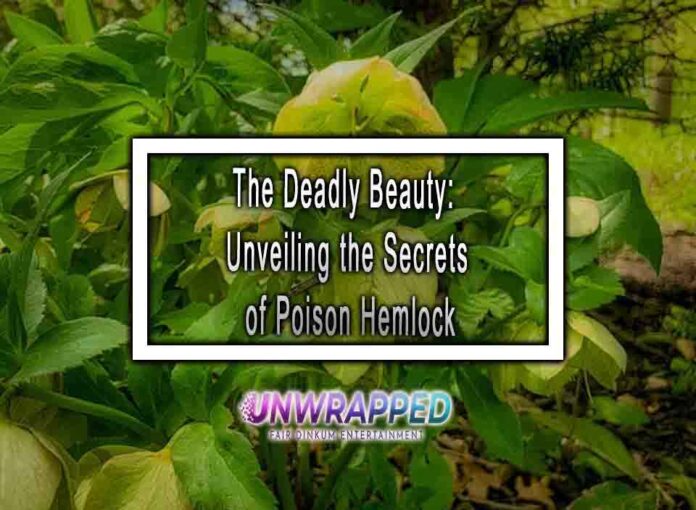“Conium maculatum,” commonly known as poison hemlock, is a highly toxic plant that has a sinister reputation throughout history. This deadly beauty belongs to the Apiaceae family and is often mistaken for other non-toxic plants, such as wild carrots or parsley, due to its similar appearance. Here are some key aspects to unveil the secrets of poison hemlock:
1. Identification:
- Appearance: Poison hemlock is a tall, biennial plant that can reach heights of 5 to 10 feet. It has a smooth, hairless stem with purple spots or streaks.

- Leaves: The leaves are finely divided and fern-like, resembling parsley. They emit a musty odor when crushed.
- Flowers: In late spring to early summer, poison hemlock produces small, white flowers in umbrella-shaped clusters.
2. Toxic Components:
- Coniine: The most potent alkaloid in poison hemlock, coniine, is a neurotoxin that affects the central nervous system. Ingesting even small amounts can lead to severe poisoning and death.
- Other Alkaloids: Poison hemlock contains several other toxic alkaloids, including gamma-coniceine and conhydrine.
3. Historical Notoriety:
- Socrates’ Execution: One of the most infamous incidents involving poison hemlock is the execution of the ancient Greek philosopher Socrates in 399 BCE. He drank a concoction containing poison hemlock as his method of death.
- Witchcraft and Folklore: Poison hemlock has also been associated with witchcraft and dark folklore, adding to its mystique and reputation.
4. Toxicity Symptoms:
- Early Signs: Initial symptoms of poisoning include nausea, vomiting, and abdominal pain.
- Neurological Effects: As the toxicity progresses, it leads to central nervous system effects such as tremors, seizures, and respiratory failure.
- Fatal Dose: Ingesting even a small amount of poison hemlock can be lethal, and there is no known antidote.
5. Prevention and Treatment:
- Avoidance: The best way to prevent poisoning is to avoid handling or ingesting the plant. Proper identification is crucial.
- Medical Attention: In case of ingestion, seeking immediate medical attention is vital. Supportive care, such as respiratory assistance and activated charcoal, may be administered.
6. Ecological Impact:
- Invasive Nature: Poison hemlock is considered an invasive species in some regions, competing with and displacing native plants.
- Livestock Poisoning: Livestock, especially cattle, can be affected by poison hemlock if they graze on infested pastures.
7. Control and Management:
- Herbicides: Control methods include the use of herbicides to manage infestations.
- Manual Removal: Physical removal, wearing protective clothing, is another approach, but extreme care must be taken to avoid exposure.
Understanding the deadly secrets of poison hemlock is crucial for both public safety and environmental conservation. Proper education and awareness can help mitigate the risks associated with this toxic plant.










